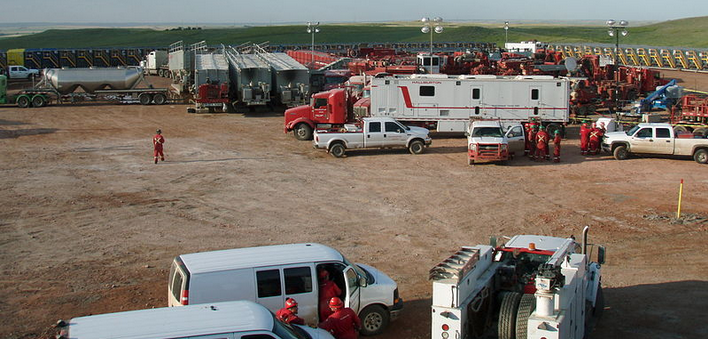
NYT: Crime In The Dakota Oil Patch: It’s A Trend! (Unlike The Knockout Game)
By Steve Sailer
12/03/2013
Another headline from The New York Times in its continuing series: "Blue Collar Prosperity in North Dakota — Yecch!"
One cold morning last year, a math teacher jogging through her hometown in eastern Montana was abducted, strangled and buried in a shallow grave. Charged in her death were two drifters from Colorado, drawn to the region by the allure of easy money in the oil fields.
One hundred fifty miles away, in a bustling oil town in North Dakota, a 30-year-old man disappeared one afternoon from the street where he had been putting in water and sewer pipes, leaving behind a lunchbox with his paycheck inside and a family grasping for answers. After months of searching, his mother said she now believes her son is gone, buried somewhere on the high plain.
Two crimes, 150 miles apart: It’s a trend, and therefore, unlike Knockout Game, it’s news.
Stories like these, once rare, have become as common as drilling rigs in rural towns at the heart of one of the nation’s richest oil booms. Crime has soared as thousands of workers and rivers of cash have flowed into towns, straining police departments and shattering residents’ sense of safety.
“It just feels like the modern-day Wild West,” said Sgt. Kylan Klauzer, an investigator in Dickinson, in western North Dakota. The Dickinson police handled 41 violent crimes last year, up from seven only five years ago.
To the police and residents, the violence shows how a modern-day gold rush is transforming the rolling plains and farm towns where people once fretted about a population drain. Today, four-story chain hotels are rising, and small apartments rent for $2,000 a month. Two-lane roads are jammed with tractor-trailers. Fast-food restaurants offer $300 signing bonuses for new employees, and jobs as gas station attendants can pay $50,000 a year. Workers flush with cash are snapping up A.T.V.s, and hotel menus offer crab and artichoke dip and bacon-wrapped dates.
A pattern I've noticed is the New York Times' fear and loathing of prosperity in North Dakota. It’s weird. The normal human reaction to a cold, emptying-out place finally getting a lucky break would be, "Oh, that’s nice." But to the NYT, North Dakota is an endless horrorshow of cashiers making $24 per hour and other atrocities.
Last year, a study by officials in Montana and North Dakota found that crime had risen by 32 percent since 2005 in communities at the center of the boom.
According to the report by North Dakota and Montana law enforcement agencies wanting, not unreasonably, their cut of the new tax dollars, the population in the Williston area is up 17 percent. So, per capita, the crime rate is up 13% over seven years, or, in effect, a couple of percent per year. A per capita increase in crime of two percent per year doesn’t sound like all that much, but it’s a Trend! So, therefore it’s National News.
A very large fraction of the newcomers are younger men, so the crime rate may even have fallen per capita among, say, males 18-45.
Still, you don’t want to statistically adjust away everything: obviously, it’s a rowdier place than a decade ago when so many young people were leaving North Dakota.
Relative to inner city America, how crime-ridden is the Oil Patch? Well, toward the end of the long article:
While the raw numbers of murders and rapes remain low, every few months seem to bring an act of violence that flares like a gas flame on the dark prairie, shaking a community and underscoring how much life here is changing.
I think that answers your question.
